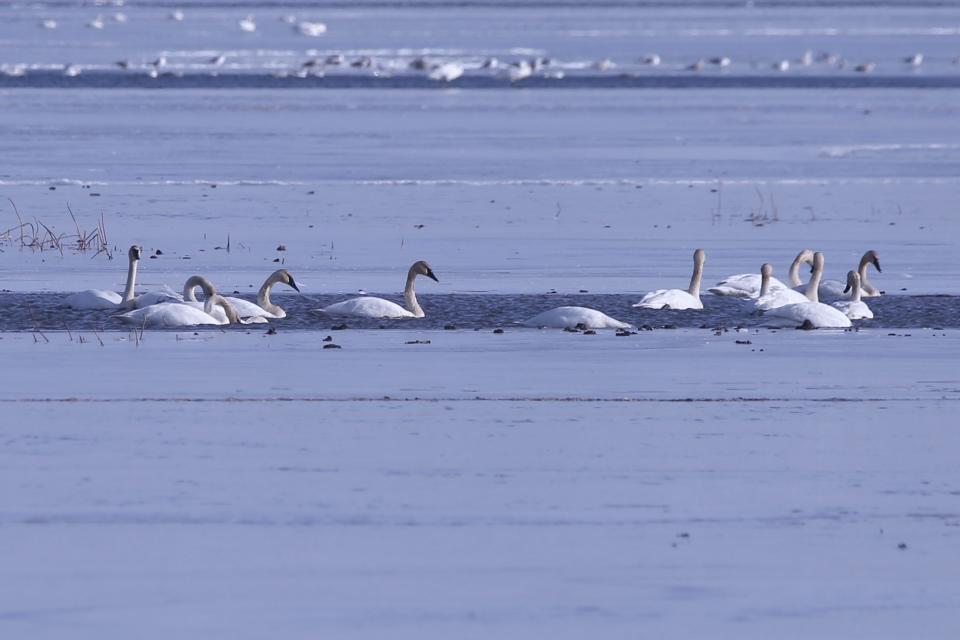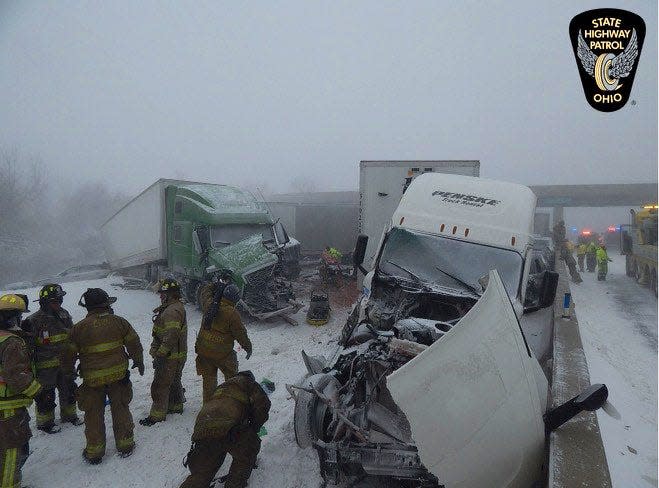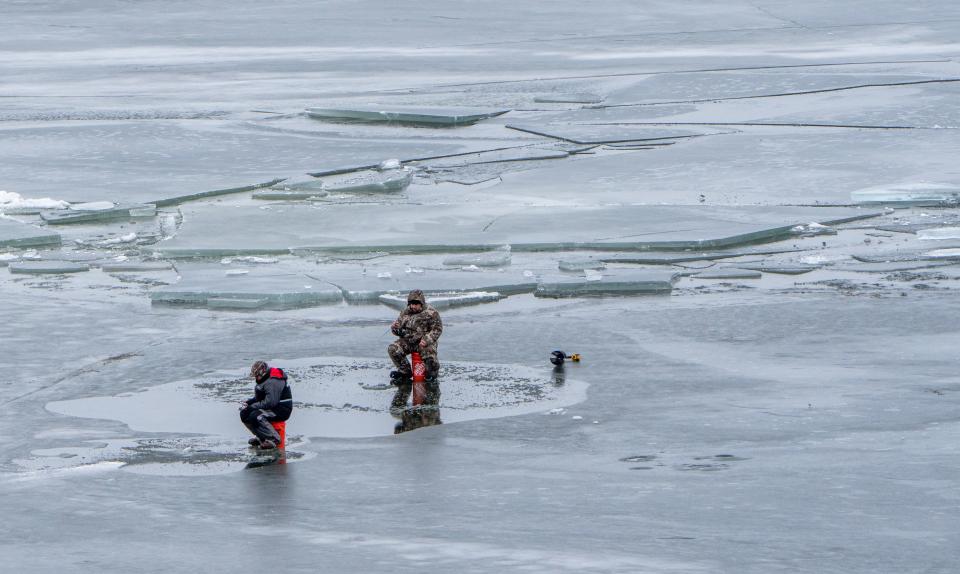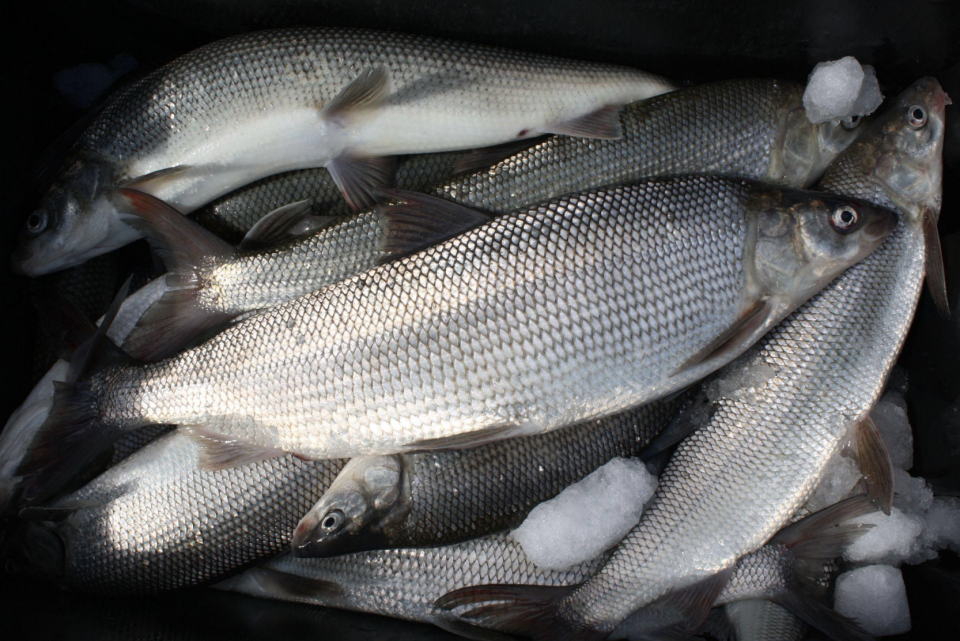It's mid-March and the Great Lakes are virtually ice-free. That's a problem.

It’s the middle of March and the Great Lakes are virtually ice-free.
Ice has been far below average this year, with only 7% of the lakes covered as of last Monday — and no ice at all on Lake Erie. Lake Erie's average ice coverage for this time of year is 40%, based on measurements over the past half-century. The lake typically freezes over the quickest and has the most ice cover because it's the shallowest of the five Great Lakes.
But communities along Ohio's north coast, including Cleveland, Sandusky and Port Clinton, have seen considerably less ice forming on Lake Erie in recent years.
According to the National Oceanic and Atmospheric Administration's Great Lakes Environmental Research Laboratory, Lake Erie's ice coverage peaked in early February at 40%, a nearly 20% decrease from the historical average.
No ice isn’t a good thing for the lakes’ ecosystem. It can even stir up dangerous waves and lake-effect snowstorms.
So, what happens when the lakes are ice-free? What does it mean for the lakes’ food web? Is climate change to blame?
Little ice cover can be disastrous
This winter has already proved how dangerous lake-effect snow can be.
At the end of November, more than 6 feet of snow fell on Buffalo, New York, which sits on the shores of Lake Erie. A few weeks later on Dec. 23, more than 4 feet of snow covered the city and surrounding areas once again. The storm resulted in 44 deaths in Erie and Niagara counties, which sit on Lakes Erie and Ontario, respectively.
December 2022 storm:Winter storm leads to more than 1,300 crashes, multiple fatalities on Ohio roads
Cleveland and Sandusky reside on the shores of Lake Erie as well. The 2022 storm that swept the region on Dec. 23 dropped relatively little snow, only about 2-4 inches, but created dangerous conditions nonetheless.
In some places in Northeast Ohio, temperatures dropped from nearly 40 degrees to zero and below. Wind chills fueled by hurricane-force winds dragged the temperature even lower to minus 30 or even 35 below zero. This storm was the first time in almost a decade that the Cleveland Weather Forecast Office issued a blizzard warning.
A 46-vehicle pileup on the Ohio Turnpike near Sandusky claimed four lives.

During stormy winter months, ice cover tempers waves. When there is low ice cover, waves can be much larger, leading to lakeshore flooding and erosion. That happened in January 2020 along Lake Michigan’s southwestern shoreline. Record high lake levels mixed with winds whipped up 15-foot waves that flooded shorelines, leading Gov. Tony Evers to declare a state of emergency for Milwaukee, Racine and Kenosha counties.
And while less ice may seem like a good thing for the lakes’ shipping industry, those waves can create dangerous conditions.
The Great Lakes are losing ice with climate change
The Great Lakes have been losing ice for the past five decades, a trend that scientists say will likely continue.
Of the last 25 years, 64% had below-average ice, said Michael Notaro, the director of the Center on Climatic Research at the University of Wisconsin-Madison. The steepest declines have been in the north, including Lake Superior, northern Lake Michigan and Huron, and in nearshore areas.
Record high temperatures:Another weather record broken in Greater Akron; third record high set this month
More: What's the state of the Great Lakes? Successful cleanups tempered by new threats from climate change
But this also comes with a lot of ups and downs, largely because warming is causing the jet stream to “meander,” said Ayumi Fujisaki Manome, a scientist at the Cooperative Institute for Great Lakes Research at the University of Michigan who models ice cover and hazardous weather across the lakes.
There is a lot of year-to-year variability with ice cover spiking in years like 2014, 2015 and 2019 where the lakes were almost completely iced over.

No ice makes waves in the lakes’ ecosystems
A downturn in ice coverage due to climate change will likely have cascading effects on the lakes’ ecosystems.
Lake whitefish, a mainstay in the lakes’ fishing industry and an important food source for other fish like walleye, are one of the many Great Lakes fish that will be affected, said Ed Rutherford, a fishery biologist who also works at the Great Lakes Environmental Research Laboratory.
Lake whitefish spawn in the fall in nearshore areas, leaving the eggs to incubate over the winter months. When ice isn’t there, strong winds and waves can stir up the sediment, reducing the number of fish that are hatched in the spring, Rutherford said.

Walleye and yellow perch also need extended winters, he said. If they don’t get enough time to overwinter in cold water, their eggs will be a lot smaller, making it harder for them to survive.
Even so, the Ohio Department of Natural Resources Division of Wildlife released a report stating that Lake Erie's 2022 walleye and yellow perch populations in the central and western basins are above average. Yellow perch hatches in the central basin are below average, however.
Declining ice cover on the lakes is also delaying the southward migration of dabbling ducks, a group of ducks that include mallards, out of the Great Lakes in the fall and winter, Notaro said. And if the ducks spend more time in the region it will increase the foraging pressure on inland wetlands.
Warming lakes and a loss of ice cover over time also will be coupled with more extreme rainfall, likely inciting more harmful algae blooms, said Notaro. These blooms largely form from agricultural runoff, creating thick, green mats on the lake surface that can be toxic to humans and pets.

Lakes Erie and Michigan are plagued with these blooms every summer. And now, blooms cropping up in Lake Superior for the first time are raising alarm.
“Even deep, cold Lake Superior has been experiencing significant algae blooms since 2018, which is quite atypical,” Notaro said.
There is still a big question mark on the extent of the changes that will happen to the lakes’ ecosystem and food web as ice cover continues to decline. That’s because scientists can’t get out and sample the lakes in the harsh winter months.
“Unless we can keep climate change in check … it will have changes that we anticipate and others that we don’t know about yet,” Rutherford said.
Caitlin Looby is a Report for America corps member who writes about the environment and the Great Lakes. Reach her at clooby@gannett.com or follow her on Twitter @caitlooby. Beacon Journal reporter Derek Kreider contributed to this article.
This article originally appeared on Akron Beacon Journal: Lack of ice upends Great Lakes' food web, incites algae blooms

 Yahoo Autos
Yahoo Autos 